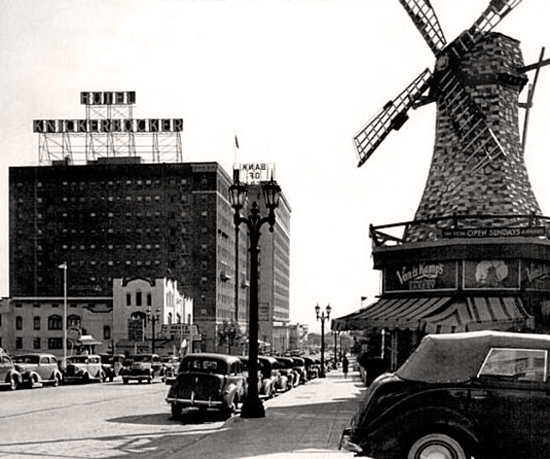July 29, 2013
Frankenstein's Windmill
Labels: • Frankenstein (1931), Places
July 23, 2013
Rare Frankenstein Insert Card
Update! The Frankenstein Insert Card was sold on July 27, 2013 for a staggering $262,900.00, more than twice the top estimate for this item.
Labels: • Frankenstein (1931), Posters
July 15, 2013
FanTasia Festival 2013
 Richard Raaphorst’s Frankenstein’s Army — a project that has been percolating for six years
— finally gets its North American premiere on July 20. Here’s the film’s schedule page, complete with a demented trailer.
Also intriguing is the Canadian feature The Dead Experiment, about returning from the dead… and its alarming
side effects.
Richard Raaphorst’s Frankenstein’s Army — a project that has been percolating for six years
— finally gets its North American premiere on July 20. Here’s the film’s schedule page, complete with a demented trailer.
Also intriguing is the Canadian feature The Dead Experiment, about returning from the dead… and its alarming
side effects.Frankenstein’s Army
Labels: • Frankenstein's Army (2012), Fantasia
July 12, 2013
Son of Frankenstein fotobusta
 The monochromatic art is by the Corsican-born Francesco
Giammari (1908-1973) who first came to prominence with his superb woodcuts
illustrating the history and ethnography of his homeland. Moving to Italy,
Giammari’s produced highly-charged symbolic art promoting the annexation of
Corsica, a fascist ideal of the time. Today, Giammari, is regarded as one of
the great Corsican artists for his early woodcuts as well as his fine art paintings and
atmospheric landscapes.
The monochromatic art is by the Corsican-born Francesco
Giammari (1908-1973) who first came to prominence with his superb woodcuts
illustrating the history and ethnography of his homeland. Moving to Italy,
Giammari’s produced highly-charged symbolic art promoting the annexation of
Corsica, a fascist ideal of the time. Today, Giammari, is regarded as one of
the great Corsican artists for his early woodcuts as well as his fine art paintings and
atmospheric landscapes.July 8, 2013
Frankenstein Lends a Hand
Here, Mr. Gary Fink poses in a rubber mask — and stilts? — with wife Kathy and child Luke, participating in a community event. The photo and its somewhat garbled caption appeared on September 14, 1982, in the Suburban News of Spencerport, a suburb of Rochester, New York.
Labels: Pop Culture
July 1, 2013
Frankenstein Ads
The Frankenstein Monster has enjoyed a busy and enduring career as an advertising pitchman. Here’s a recent ad for T-Mobile spoofing AT&T's TV spots where an adult interacts with children. This one, substituting The Monster, is shot on a fantastic laboratory set, featuring a stylistic mashup meeting of a classic Universal-style flattop Monster and a Hammer/Cushing-like Dr. Frankenstein. There is also a fake "outtakes" video.

Casting back to 2010, click the image or follow the link to Ads of the World and watch a witty ad for the Crunch Fitness chain of gyms. This one's very much worth a look.
With thanks to Joe Thompson.
Related:
The Pitch of Frankenstein
The Beer of Frankenstein
Frankenstein Gets Relief
Labels: Advertising













